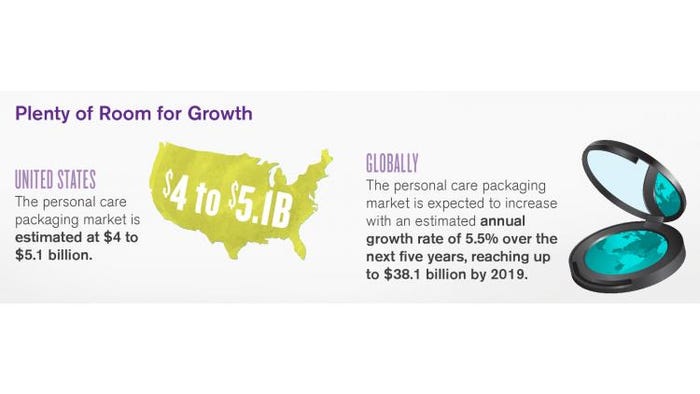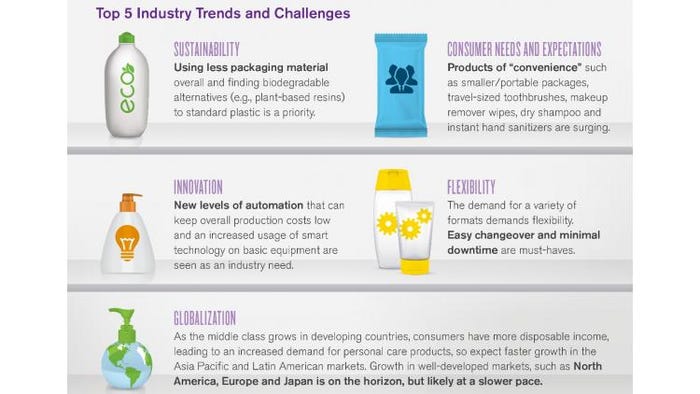Plastic packaging dominates the personal care market
At 61% market share, plastic packaging—such as bottles, jars, compacts and tubes—reigns as queen for cosmetics and other personal care products. Plastic will keep its crown for the foreseeable future, with an expected 12% growth by 2019. Bottles are the most commonly used container, accounting for 30% of the market and are expected to grow 28% through 2019.
Since most packages for health and beauty aids need to be break-resistant and/or portable, this preference for plastic isn’t too surprising. But while plastics are popular, cartons are climbing. They’ve seen the steepest increase since 2010, growing from 9% to 19%.
These numbers and more come from the recent “Personal Care Market Assessment” report from PMMI, the Assn. for Packaging and Processing Technologies, which estimates the global personal care market to grow at an annual rate of 5.5%.

By 2019, this flourishing market is projected to be worth $38.1 billion, with developing nations such as Latin America and Asia-Pacific seeing higher growth rates than developed countries. But these established markets will still be spending a “pretty” penny on looking and smelling good. As of now, the U.S. alone represents about one-sixth of the worldwide total, spending an estimated $4 to $5.1 billion each year on beauty and grooming products.
The PMMI report also identifies the top five global trends and challenges in the personal care market:
Sustainability—Brand owners are looking to reduce the amount of material and replace plastic with biopolymers to help improve their eco footprint.
Consumer Needs & Expectations—Smaller and/or portable packages, as well as wipes, answer some of the consumer demand for convenience.
Innovation in Efficiencies—Automation and smart packaging equipment can help control production costs.
Flexibility—Packaging lines need to be able to changeover quickly and easily to handle multiple packaging formats.
Globalization—As more consumers around the world enjoy the luxury of having more disposable income, spending on personal care products is expected to rise.

About the Author(s)
You May Also Like




